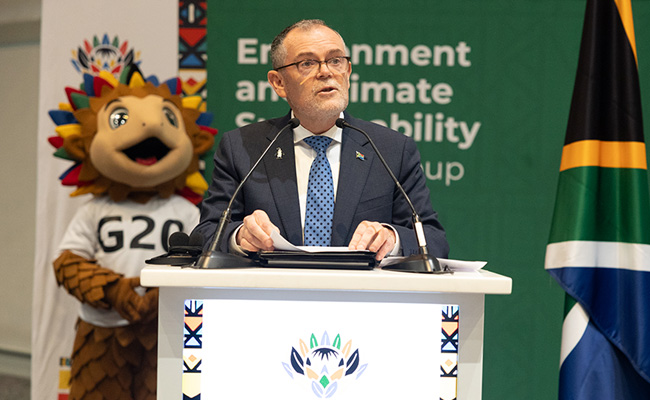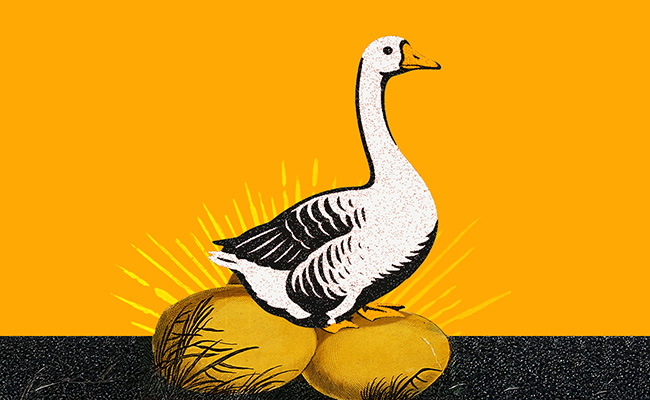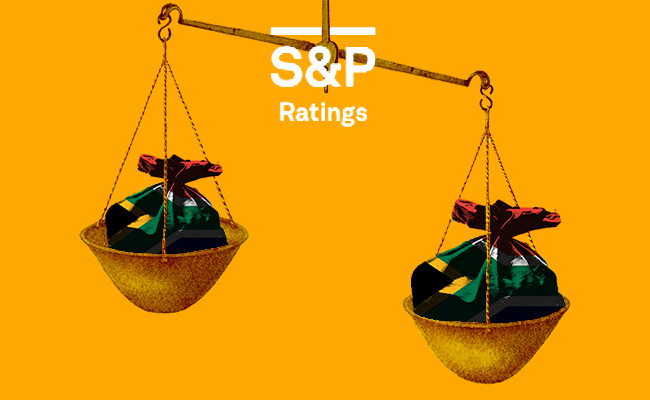From goings-on in politics to info drops in the economic world, we’ve got you covered on what to expect this week.
Politics
D-day for GNU, Joburg coalition
PA leader Gayton McKenzie has given the ANC until Tuesday to reinstate his deputy, Kenny Kunene, as the MMC for transport in Joburg, failing which the PA will exit all coalitions with the ANC, including the government of national unity (GNU) and coalitions in Joburg and Ekurhuleni.
Kunene resigned his position in July when the PA suspended him after he was discovered at the home of alleged murder kingpin Katiso “KT” Molefe. McKenzie declared Kunene “innocent” after a report from Cliffe Dekker Hofmeyr cleared him of any wrongdoing.
McKenzie has also pointed to failures in addressing “service delivery crises”, such as prolonged water shortages in Westbury and Newclare, as proof of broken promises. He argues that coalition partners have undermined agreements and treated the PA as dispensable.
An exit could reshape municipal and national balances of power. The PA will be the first party to exit the GNU since its formation 15 months ago, and McKenzie will be the first minister to resign as a result.
US trade talks
Trade relations with the US will be in sharp focus this week as South Africa enters formal negotiations to revise a deal that could ease the burden of 30% tariffs imposed by Donald Trump’s administration. President Cyril Ramaphosa confirmed that South Africa has received a draft text and now entered a phase of structured talks. Officials from the department of trade, industry and competition have requested two weeks to consult with other agencies before responding, underscoring the stakes in a relationship worth $21.6bn in 2024, when South Africa posted a $7.7bn surplus.
The tariffs have hit auto exports hardest, while raising risks for citrus and wine sales. In an effort to secure relief, South Africa has already pledged to ease US chicken and pork access, and consider liquefied natural gas purchases. The outcome will not only affect exporters but also Ramaphosa’s credibility as he navigates frosty ties with Washington.
This all comes after Ramaphosa told the UN General Assembly last week that “trade is now being used as a weapon”, a pointed reminder that Ramaphosa sees the negotiations not only as a commercial exercise but also as a test of South Africa’s geopolitical standing.
By-elections
There are three by-elections on Wednesday, where the ANC will be defending every ward. The first is in ward 5 in Elundini, Eastern Cape. The ANC won the ward in 2021 with 82% of the vote (UDM 11%, EFF 5%) and will face off against the Afrika Unite Congress and the African Transformation Movement, despite the growth of the UDM and Build One South Africa in the ward in the 2024 election.
The ANC won ward 10 in Tshwane in 2021 with just 47% of the vote (EFF 27%, independent 11%). The party’s share of the vote rose to 59% in the 2024 provincial election while the EFF’s fell to 24%. The ANC will feel fairly confident of retaining this ward, especially against a crowded field (EFF, DA, Al Jama-ah, MK and the Bolsheviks Party of South Africa) that will split the opposition vote.
In ward 26 of Emalahleni (Mpumalanga), the ANC won in 2021 with 49% of the vote (DA 29%, EFF 9%). In the 2024 provincial ballot, the ANC dropped to just 25% against the DA’s 27%, MK’s 24% and the EFF’s 16%. The four parties will battle it out on Wednesday in a contest where any one of the ANC, DA or MK could take the ward. If the ANC loses the ward it will lose its majority in the Emalahleni council.
Economics
Private sector credit growth
At 8am on Tuesday, attention will shift to the release of private sector credit extension for August, a key gauge of lending appetite and financial health in the economy. Growth is likely to have slowed to about 5.3% year on year, easing from July’s stronger-than-expected 5.8%. Within that, loans and advances excluding investment and bills are expected to soften from 6.5% to about 6.2%.
Household credit growth should remain steady near 3% year on year, aided by subdued inflation, low interest rates and improved finances, though spending is still restrained by uncertainty over jobs. Corporate credit may stay firm at about 9% year on year, largely reflecting base effects, but companies remain cautious about investing amid weak demand and idle capacity. The print will be closely watched as an indicator of whether credit recovery is gaining real traction.
Trade balance
At 2pm on Tuesday, markets will focus on South Africa’s trade balance for August, which is likely to show a narrowing surplus of roughly R18.4bn, down from R20.3bn in July. Imports have probably continued to outpace exports, buoyed by relatively stable domestic conditions: subdued inflation, firmer real incomes and easier financing costs that have supported purchasing power.
On the export side, gold prices have offered resilience, with platinum and coal also seeing modest gains, but weak global demand continues to weigh on overall momentum. The combination of strong import appetite and only moderate export growth is set to trim the headline surplus. Analysts will be looking for signs of whether this is the start of a trend or just a temporary dip linked to shifting commodity cycles.
SARB Quarterly Bulletin Q2
At 10am on Tuesday, the South African Reserve Bank’s Quarterly Bulletin will provide its in-depth review of the economy’s performance in Q2 2025. The report is likely to show some improvement in household finances after a weak Q1, helped by recent rate cuts. Disposable incomes may have been further supported by withdrawals under the two-pot pension system, though the impact is partly offset by persistently poor labour market conditions.
The bulletin will also shine a light on sectoral dynamics: mining and commodity exports probably delivered relative strength, while domestic demand lagged. For analysts and markets, the release will be a key reference point for assessing whether South Africa is on a firmer recovery path, and how the Reserve Bank may react to shifting risks.
Vehicle sales
At 2.30pm on Wednesday, September’s new vehicle sales print drops. The numbers are likely to show growth of about 17.7% year on year, easing slightly from August’s surprising 18.7% surge. The strong momentum reflects a mix of those easier financial conditions which have supported household purchasing power.
Automakers will welcome the momentum, but weak job prospects and a fragile economy raise doubts over how long the rebound can last. September’s figures will show whether the surge is set to last or whether it’s just a short burst of demand.

This article is published courtesy of The South Africa Brief, a political newsletter published on Substack which is a collaboration between Paul Berkowitz and Jonathan Moakes. It provides analysis and insight into the new, uncertain era of South African politics heralded by the 2024 general election. Including a specific focus on municipal politics, it will provide full analysis in the run-up to next year’s municipal polls.
Sign up to Currency’s weekly newsletters to receive your own bulletin of weekday news and weekend treats. Register here.











